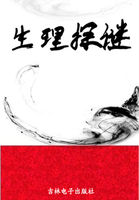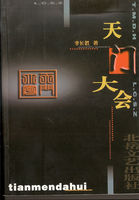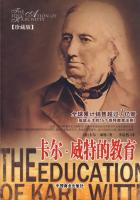Formation and amount of mould over the Chalk Formation.--Worm- castings are often ejected in extraordinary numbers on steep, grass-covered slopes, where the Chalk comes close to the surface, as my son William observed near Winchester and elsewhere.If such castings are largely washed away during heavy rains, it is difficult to understand at first how any mould can still remain on our Downs, as there does not appear any evident means for supplying the loss.There is, moreover, another cause of loss, namely, in the percolation of the finer particles of earth into the fissures in the chalk and into the chalk itself.These considerations led me to doubt for a time whether I had not exaggerated the amount of fine earth which flows or rolls down grass-covered slopes under the form of castings; and I sought for additional information.In some places, the castings on Chalk Downs consist largely of calcareous matter, and here the supply is of course unlimited.But in other places, for instance on a part of Teg Down near Winchester, the castings were all black and did not effervesce with acids.The mould over the chalk was here only from 3 to 4 inches in thickness.So again on the plain near Stonehenge, the mould, apparently free from calcareous matter, averaged rather less than 3.5 inches in thickness.Why worms should penetrate and bring up chalk in some places and not in others I do not know.In many districts where the land is nearly level, a bed several feet in thickness of red clay full of unworn flints overlies the Upper Chalk.This overlying matter, the surface of which has been converted into mould, consists of the undissolved residue from the chalk.It may be well here to recall the case of the fragments of chalk buried beneath worm-castings on one of my fields, the angles of which were so completely rounded in the course of 29 years that the fragments now resembled water-worn pebbles.This must have been effected by the carbonic acid in the rain and in the ground, by the humus- acids, and by the corroding power of living roots.Why a thick mass of residue has not been left on the Chalk, wherever the land is nearly level, may perhaps be accounted for by the percolation of the fine particles into the fissures, which are often present in the chalk and are either open or are filled up with impure chalk, or into the solid chalk itself.That such percolation occurs can hardly be doubted.My son collected some powdered and fragmentary chalk beneath the turf near Winchester; the former was found by Colonel Parsons, R.E., to contain 10 per cent., andthe fragments 8 per cent.of earthy matter.On the flanks of the escarpment near Abinger in Surrey, some chalk close beneath a layer of flints, 2 inches in thickness and covered by 8 inches of mould, yielded a residue of 3.7 per cent.of earthy matter.On the other hand the Upper Chalk properly contains, as I was informed by the late David Forbes who had made many analyses, only from 1 to 2 per cent.of earthy matter; and two samples from pits near my house contained 1.3 and 0.6 per cent.I mention these latter cases because, from the thickness of the overlying bed of red clay with flints, I had imagined that the underlying chalk might here be less pure than elsewhere.The cause of the residue accumulating more in some places than in others, may be attributed to a layer of argillaceous matter having been left at an early period on the chalk, and this would check the subsequent percolation of earthy matter into it.
From the facts now given we may conclude that castings ejected on our Chalk Downs suffer some loss by the percolation of their finer matter into the chalk.But such impure superficial chalk, when dissolved, would leave a larger supply of earthy matter to be added to the mould than in the case of pure chalk.Besides the loss caused by percolation, some fine earth is certainly washed down the sloping grass-covered surfaces of our Downs.The washing-down process, however, will be checked in the course of time; for although I do not know how thin a layer of mould suffices to support worms, yet a limit must at last be reached; and then their castings would cease to be ejected or would become scanty.
The following cases show that a considerable quantity of fine earth is washed down.The thickness of the mould was measured at points 12 yards apart across a small valley in the Chalk near Winchester.The sides sloped gently at first; then became inclined at about 20 degrees; then more gently to near the bottom, which transversely was almost level and about 50 yards across.In the bottom, the mean thickness of the mould from five measurements was 8.3 inches; whilst on the sides of the valley, where the inclination varied between 14 degrees and 20 degrees, its mean thickness was rather less than 3.5 inches.As the turf-covered bottom of the valley sloped at an angle of only between 2 degrees and 3 degrees, it is probable that most of the 8.3-inch layer of mould had been washed down from theflanks of the valley, and not from the upper part.But as a shepherd said that he had seen water flowing in this valley after the sudden thawing of snow, it is possible that some earth may have been brought down from the upper part; or, on the other hand, that some may have been carried further down the valley.Closely similar results, with respect to the thickness of the mould, were obtained in a neighbouring valley.
St.Catherine's Hill, near Winchester, is 327 feet in height, and consists of a steep cone of chalk about 0.25 of a mile in diameter.The upper part was converted by the Romans, or, as some think, by the ancient Britons, into an encampment, by the excavation of a deep and broad ditch all round it.Most of the chalk removed during the work was thrown upwards, by which a projecting bank was formed; and this effectually prevents worm- castings (which are numerous in parts), stones, and other objects from being washed or rolled into the ditch.The mould on the upper and fortified part of the hill was found to be in most places only from 2.5 to 3.5 inches in thickness; whereas it had accumulated at the foot of the embankment above the ditch to a thickness in most places of from 8 to 9.5 inches.On the embankment itself the mould was only 1 to 1.5 inch in thickness; and within the ditch at the bottom it varied from 2.5 to 3.5, but was in one spot6 inches in thickness.On the north-west side of the hill, either no embankment had ever been thrown up above the ditch, or it had subsequently been removed; so that here there was nothing to prevent worm-castings, earth and stones being washed into the ditch, at the bottom of which the mould formed a layer from 11 to 22 inches in thickness.It should however be stated that here and on other parts of the slope, the bed of mould often contained fragments of chalk and flint which had obviously rolled down at different times from above.The interstices in the underlying fragmentary chalk were also filled up with mould.
My son examined the surface of this hill to its base in a south- west direction.Beneath the great ditch, where the slope was about 24 degrees, the mould was very thin, namely, from 1.5 to 2.5 inches; whilst near the base, where the slope was only 3 degrees to 4 degrees, it increased to between 8 and 9 inches in thickness.We may therefore conclude that on this artificially modified hill, as well as in the natural valleys of theneighbouring Chalk Downs, some fine earth, probably derived in large part from worm-castings, is washed down, and accumulates in the lower parts, notwithstanding the percolation of an unknown quantity into the underlying chalk; a supply of fresh earthy matter being afforded by the dissolution of the chalk through atmospheric and other agencies.















